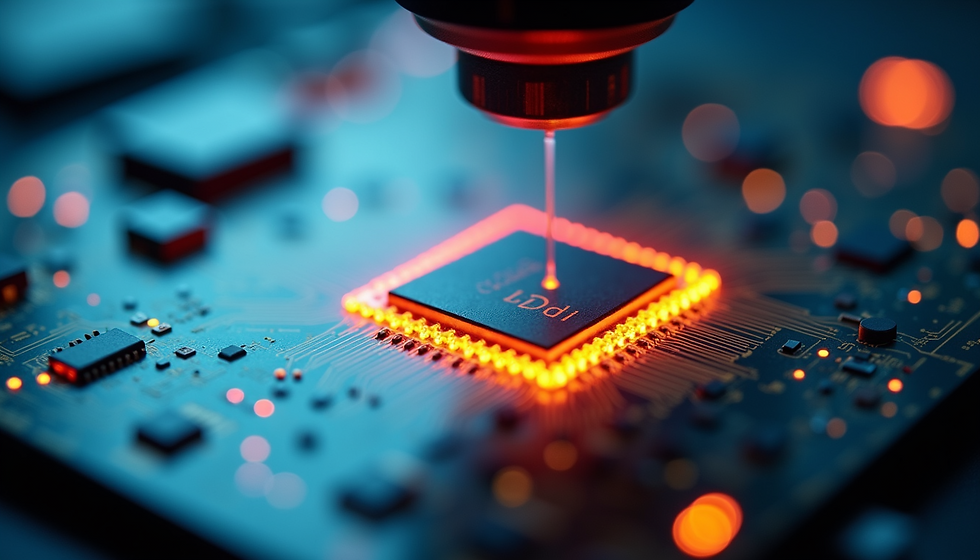The Future Is Light-Speed: An Introduction to Photonic Computing
- Brainlab Fira
- May 29
- 3 min read
Updated: Oct 3
As the digital world races toward faster, more efficient technologies, photonic computing is emerging as a powerful solution to overcome the limitations of traditional electronics. Instead of relying on electrons to transmit and process data, photonic computing uses light—harnessing photons to achieve unprecedented speed, efficiency, and performance.
From Electrons to Photons
In conventional computing, data moves through circuits in the form of electrical signals. This approach has served us well for decades, but it's reaching its physical limits. Photonic computing changes the game by replacing or supplementing electrical signals with light, using components like lasers, waveguides, and photodetectors. Because photons travel faster than electrons and don’t generate heat in the same way, they allow us to build systems that are not only faster but also more energy-efficient.
Speed, Efficiency, and Bandwidth
The benefits of this approach are significant. With photonic computing, we can process information at speeds far beyond those achievable with electrons alone. Photons carry data through optical channels, often using different wavelengths simultaneously, allowing vastly increased bandwidth and data throughput. This means that large volumes of information can be processed in real time, opening the door to more powerful AI, more responsive cloud services, and breakthroughs in scientific computing.
A New Era for AI and Data Infrastructure
In artificial intelligence, for example, photonic chips can accelerate the matrix operations that underpin deep learning models. Unlike traditional processors, which are limited by thermal constraints and energy demands, photonic systems can handle these computations in parallel with minimal power loss. This results in faster training times, more sustainable models, and ultimately, more capable AI systems.
Photonic technology is also starting to reshape data centers.
Today’s hyperscale cloud infrastructure struggles with latency and energy demands as data volumes grow. By integrating optical components, we can improve communication speeds between servers while reducing the power required for cooling and transmission. In the long run, this shift could transform the economics and environmental impact of digital infrastructure.
How We’re Building the Future at Tarranix
At Tarranix, we are taking photonic computing a step further. We are developing the world’s first 3D multilevel photonic chip based on spherical optical transistors. Unlike conventional binary logic, our chips operate using six distinct logical states derived from the polarization of light. This architecture expands the possibilities for computation, allowing us to encode and process more information using fewer components.
Our multistate design allows us to perform complex operations more efficiently than traditional systems. By using polarization as a control mechanism, we eliminate the need for excessive electrical signaling and reduce power consumption. The result is a photonic chip that is not only compact and energy-efficient, but also capable of delivering high-performance computing at a fraction of the environmental cost.

Our Approach, Our Mission
We are building this technology with a multidisciplinary team combining expertise in optics, materials science, advanced manufacturing, and theoretical computing. With support from public and private research initiatives, we are pushing the boundaries of what’s possible—not just in photonics, but in computation itself.
Looking Ahead
That said, we recognize the challenges that lie ahead. Photonic components are still being miniaturized, and integrating them into existing silicon-based platforms is a complex task. The ecosystem around photonic software and design tools is also still maturing. But we see these not as roadblocks, but as milestones. With every innovation, we move closer to a new era of computing—one where speed, sustainability, and scale are no longer competing goals.
Photonic computing is not a distant dream. It's happening now. And at Tarranix, we are committed to leading this transformation from the front. We believe the future of computing won't just be faster. It will be brighter.
To learn more about our work, visit us at tarranix.io.





Comments